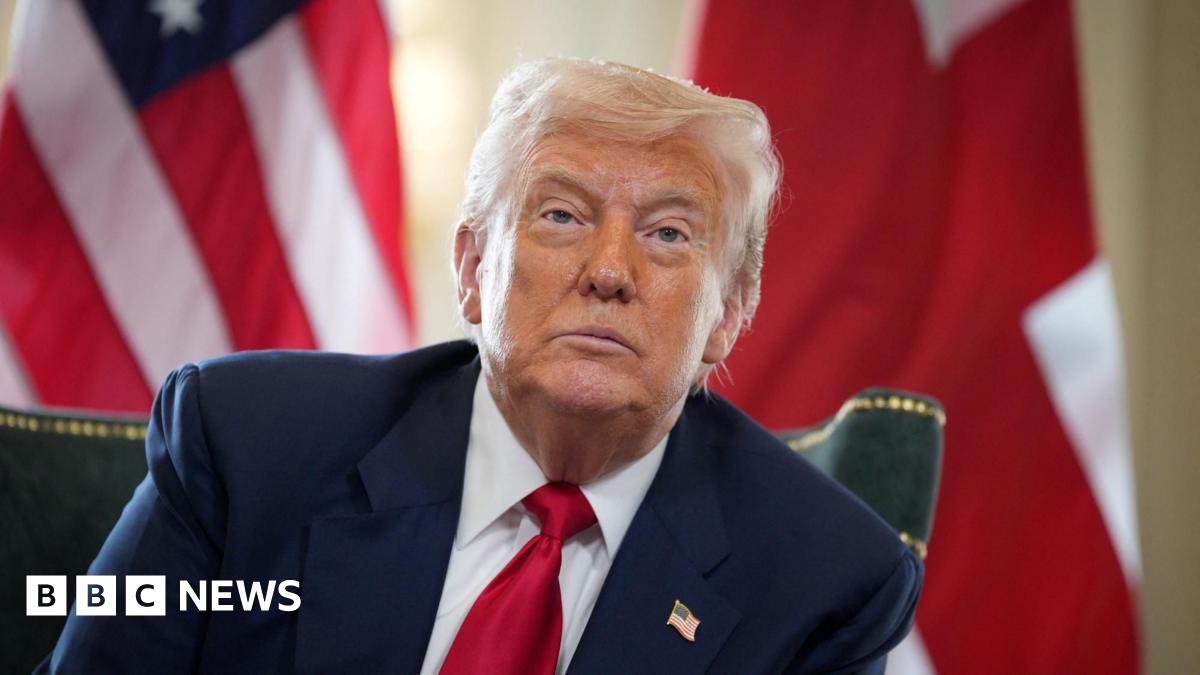New Tariff Rules Spark Changes in International Parcel Shipments

Introduction
The Trump administration's new tariff rules have sparked a wave of changes in international parcel shipments to the United States. Japan, Australia, and Taiwan are the latest countries to suspend some parcel shipments, joining a growing list of nations reacting to the tariff exemption ending.
Key Details
Japan's suspension includes packages containing goods such as clothing, furniture, and electronics, while Australia's suspension affects any parcel valued over $800. Similarly, Taiwan's suspension targets parcels valued over $800 and includes items such as clothing, shoes, and handbags. These suspensions have been implemented as a response to the new rules that require all countries to pay tariffs on goods shipped to the US, even those that previously had an exemption.
Impact
These suspensions not only affect the flow of goods to the US, but also have financial implications for both businesses and consumers. With the new tariffs, prices of goods will likely increase, making it more costly for consumers to purchase items from these countries. This could potentially lead to a decrease in trade and a negative impact on the global economy.
About the Organizations Mentioned
Trump administration
The **Trump administration** refers to the executive branch of the U.S. federal government during Donald J. Trump’s presidency, initially from January 20, 2017, to January 20, 2021, and resuming with his second term starting in 2025. It was characterized by a mix of aggressive domestic policies, significant judicial appointments, and a distinct foreign policy approach that emphasized "America First" principles[4][8]. The administration’s key activities included **tax reform**, notably passing the $3.2 trillion Tax Cuts and Jobs Act, which represented the largest overhaul of the U.S. tax code in decades[5]. Trump also renegotiated trade agreements with major economies including Mexico, Canada, China, Japan, and South Korea, prioritizing bilateral deals over multilateral ones such as the Trans-Pacific Partnership (TPP), which the administration withdrew from early on[1][2]. The administration sought to protect American jobs by restricting cheap foreign labor and influencing agencies like the Tennessee Valley Authority to retain American workers[5]. On the judicial front, the Trump administration appointed over 200 federal judges, including three Supreme Court justices—Neil Gorsuch, Brett Kavanaugh, and Amy Coney Barrett—shaping the judiciary for years to come[4]. These appointments were among the most significant achievements, influencing U.S. law on multiple fronts. In foreign policy, the administration pursued a controversial agenda: it imposed travel bans on several predominantly Muslim countries, withdrew U.S. troops from northern Syria, and supported Saudi Arabia militarily despite congressional opposition related to the Yemen conflict[1][3]. It also fostered new international technology alliances, such as securing commitments from allies to exclude Chinese telecom giant Huawei from 5G infrastructure and signing AI cooperation agreements with the UK[5]. The Trump administration faced substantial political turmoil, including two impeachments by the House of Representatives—first in 2019 over Ukraine dealings, and again in 2021 following the January
Japan
Japan is a highly developed island nation in East Asia with a population exceeding 123 million as of 2025, making it the 11th most populous country globally. Known for its technological innovation and economic strength, Japan ranks as the world’s fourth-largest economy and remains a key player in global trade and investment, notably as the United States' fifth-largest trading partner and the largest source of foreign direct investment to the U.S. in 2024[1][8]. Japan's history as a modern economic power began after World War II, rapidly transforming from a war-torn country to a global leader in technology, manufacturing, and innovation. It has excelled in electronics, automotive industries, robotics, and precision machinery, with a strong culture of research and development. Japan was ranked 12th in the 2025 Global Innovation Index, reflecting its ongoing commitment to technological advancement and innovation[5]. Despite these strengths, Japan faces significant demographic challenges. It has the world’s highest median age (48.4) and the fastest-aging population, with nearly 30% of its citizens over 65. The low fertility rate (1.2) and shrinking workforce pose risks to sustained economic growth and social welfare systems. Immigration reforms enacted in 2019 aim to alleviate labor shortages by protecting foreign workers' rights[1]. Economically, Japan experienced a slight GDP contraction in early 2025 amid global slowdown and inflation, but private investment, particularly in labor-saving technologies, grew robustly. Consumer spending is gradually recovering, and economic forecasts predict modest growth of around 0.7-1.1% through 2026, contingent on easing inflation and trade tensions, especially with the U.S.[2][3][4]. In governance, Japan scored below the OECD average on the Digital Government Index, highlighting room for improvement in digital public services despite strengths in digital design[6]. Politically, Japan maintains a stable, democratic society with high levels of personal and internet freedom
Australia
Australia—officially the Commonwealth of Australia—is a sovereign nation, not an organization in the conventional business sense, but as a country, it functions as a complex, interconnected system of governance, economy, and society with a global footprint. As a constitutional monarchy and parliamentary democracy, Australia is a federation of six states and ten territories, with a highly urbanized population of nearly 28 million, concentrated along the eastern seaboard[7]. Its capital is Canberra, while Sydney and Melbourne are its largest and most economically significant cities[7]. ## History and Governance Australia’s modern history began with British colonization in 1788, evolving into a federation in 1901. Today, it is recognized as a stable, democratic, and culturally diverse nation with a robust rule of law and high levels of public trust in government—46% of Australians express high or moderately high trust in the national government, above the OECD average[3]. The country’s governance is characterized by a commitment to transparency, efficiency, and public service, with 68% of citizens satisfied with administrative services[3]. ## Economic Profile and Achievements Australia boasts one of the world’s strongest performing economies, underpinned by abundant natural resources, advanced technology sectors, and a highly skilled workforce[1][7]. The economy grew by 1.3% in the 2024–25 financial year, rebounding from weather-related disruptions earlier in the year[2]. Key drivers include mining, agriculture, education, and financial services. The country is a global leader in innovation, particularly in renewable energy, medical research, and fintech. Australia’s trade relationships are vital, with China, the United States, Japan, and South Korea as major partners. While the U.S. is a significant export destination for Australian agricultural products, potential U.S. tariff changes pose a risk, especially to rural economies[9]. The nation is also a founding member of international groups like the United Nations, G20
Taiwan
Taiwan, officially known as the Republic of China (ROC), is a vibrant, self-governing democracy situated in East Asia, across the Taiwan Strait from mainland China. With a population exceeding 23.5 million, it is a densely populated, highly urbanized island nation that encompasses the main island of Taiwan plus the Penghu, Kinmen, and Matsu archipelagos[1][2][5]. The capital, Taipei, anchors a dynamic metropolitan region central to the country’s economic and technological activity. ## History and Political Status Taiwan’s rich history spans over 25,000 years, with indigenous peoples settling the island millennia ago. European colonial interests—Dutch and Spanish—established footholds in the 17th century, followed by Han Chinese immigration and later Qing dynasty rule. Taiwan was ceded to Japan in 1895, then returned to Chinese administration after World War II. Following the Chinese Civil War, the ROC government relocated to Taiwan in 1949, where it has since governed in an uneasy, contested relationship with the People’s Republic of China (PRC), which claims sovereignty over the island[1][2]. Today, Taiwan is not recognized as a sovereign state by the United Nations, but it operates with full democratic institutions, a constitution guaranteeing freedoms, and regular, competitive elections[5]. ## Economy and Technology Taiwan is a global leader in technology, especially semiconductors, with companies like TSMC (Taiwan Semiconductor Manufacturing Company) dominating the global chip industry. Its economy is ranked among the world’s top 20, characterized by robust trade, high-tech manufacturing, and a “mostly free” market system[4][8]. The country’s economic freedom, regulatory efficiency, and innovation ecosystem have made it a magnet for international investment, particularly in electronics, biotechnology, and green energy[4][8]. ## Society and Achievements Taiwan boasts a highly educated workforce, a strong civil society, an








